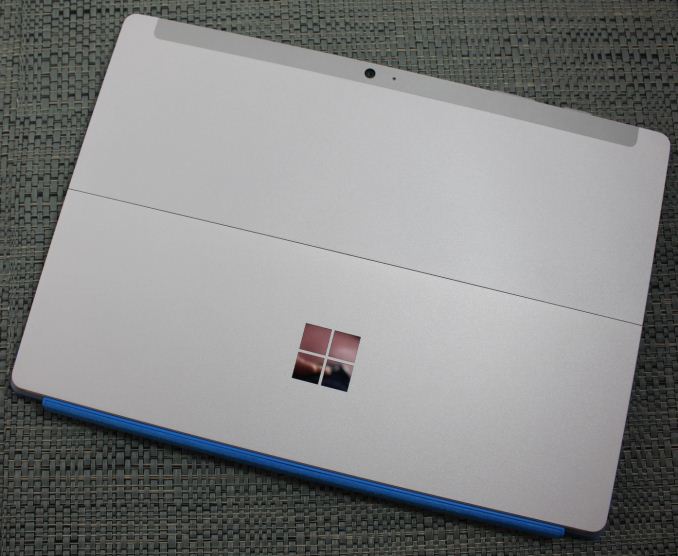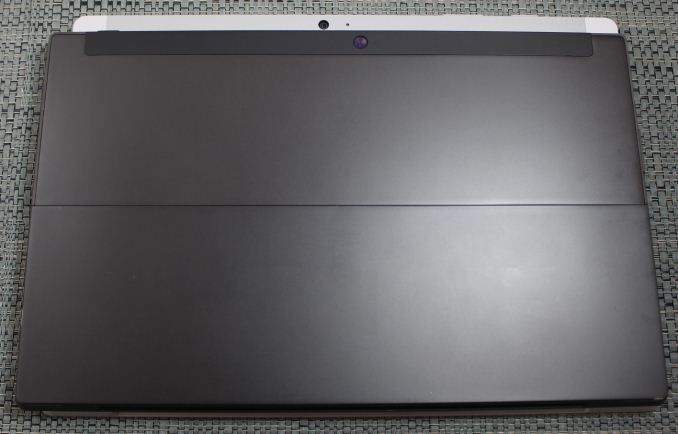The Surface 3 Review
by Brett Howse on May 4, 2015 9:00 AM EST
The Surface lineup for Microsoft has been extremely interesting to watch. What first launched in October 2012 as the Surface RT has been constantly iterated upon, and of course the Surface Pro line has evolved even faster. Surface Pro 3 has finally provided Microsoft with something that critics and consumers alike seem to have bought in to, and sales have been very strong since the Pro 3 was launched on May 20th 2014. However there has always been questions about the “consumer” version of Surface. Surface RT was, frankly, a sales disaster. The much improved Surface 2 fixed many of its shortcomings, but certainly did not set the world on fire. So now we have the third generation Surface, aptly named the Surface 3. There are a pile of changes that Microsoft has made to this generation of device, and obviously their hopes are that Surface 3 will be as popular as the Surface Pro 3 has been, but extending the device back down to a lower price point.
That price point is important. As much as the Surface Pro 3 has gained its share of fans, it is far from cheap. The most inexpensive model starts at $799, and for that you still do not get the keyboard. Surface 3 moves that bar down significantly, and the starting price is the exact same as the original Surface RT, at $499. Microsoft had to trim down the Pro model to hit this price point, but the cuts were well placed.
 Surface RT compared to Surface 3
Surface RT compared to Surface 3
I think looking at the Surface 3 in a vacuum would be improper, since the device now is really an evolution of the previous two Surface models. From a build quality standpoint, the original Surface RT was top notch, with its VaporMg case, the revolutionary kickstand, and high attention to detail for all of the aspects from buttons to display. I think in 2015 it is pretty obvious what the shortcomings of the Surface RT were though. Performance was less than acceptable with the Tegra 3 SoC on board, and Surface RT was handicapped with the confusingly named Windows RT operating system and the lack of software compatibility that goes with using an ARM CPU instead of traditional x86. Surface 2 fixed the performance issue by moving to NVIDIA’s Tegra 4 SoC, and while not the outright fastest tablet chip, it was at least in the ballpark. However it kept the Windows RT operating system at a time when everyone else had abandoned it.
Surface 3 has fixed that final issue and at the same time made some amazing improvements to the overall design and feel. Full x86 Windows is on tap, for better or for worse, and powered by a brand new SoC. This must be a special moment in history where a Microsoft built device is the launch vehicle for a brand new product from Intel. The Surface 3 is powered by the 14nm Intel Atom x7, in this case the x7-Z8700 model which is the current top of the line Atom processor. Codenamed Cherry Trail, this is the massaged Bay Trail cores now built on Intel’s now mature 14nm FinFET process, and they include the same GPU cores as Broadwell.
| Microsoft Surface Comparison | |||
| Surface 3 (Base) | Surface 3 (High) | Surface 2 | |
| Size | 10.52 x 7.36 x 0.34 inch 267 x 187 x 8.7 mm |
10.81 x 6.79 x 0.35 inch 275 x 173 x 8.8 mm |
|
| Weight | 1.37 lbs - 622 g | 1.49 lbs - 675 g | |
| Display | 10.8-inch ClearType Full HD Plus 1920x1280 resolution, 3:2 ratio 10-point multi-touch Surface Pen Support |
10.6-inch ClearType Full HD 1920 x 1080 resolution, 16:9 ratio 5-point multi-touch |
|
| Battery | 28 Wh, 13 W AC Adapter | 31.5 Wh, 24 W AC Adapter | |
| Storage | 64GB | 128GB | 32GB or 64GB eMMC |
| RAM | 2GB | 4GB | 2GB |
| CPU | Atom x7-Z8700 Quad Core 14nm 1.6 GHz Base Frequency 2.4 GHz Burst Frequency |
NVIDIA Tegra 4 4x ARM Cortex-A15 @1.7GHz |
|
| WiFi | Marvell 802.11ac + BT 4.0 LTE Models at a later date |
802.11n + BT 4.0 | |
| Ports | USB 3.0, Mini-DisplayPort, microSD, Micro USB charging, 3.5mm Headset Jack |
USB 3.0, micro-HDMI, microSD, proprietary charging | |
| Software | Windows 8.1 Office 365 Personal with 1TB OneDrive (1-year) |
Windows RT 8.1 Office 2013 RT Home & Student Edition |
|
| Front Camera | 3.5 MP | 3.5 MP | |
| Rear Camera | 8.0 MP with Autofocus | 5.0 MP | |
| Operating System | Windows 8.1 64-bit | Windows RT 8.1 | |
| Warranty | 1-year limited | 1-year limited | |
| Price | $499 | $599 | $449 |
In addition to the new SoC, Surface 3 can be purchased with up to 128 GB of eMMC storage, and the higher storage models also come with 4 GB of RAM. This compares to the base model which is 2 GB of RAM and 64 GB of storage, which is already one of the big improvements Microsoft has made with Surface. 32 GB of storage on a Windows tablet is really the bare minimum required, and the move to 64 GB as the base is going to make this tablet far more usable. You can of course add more storage with a micro SD card, but until Windows gets the great SD card support from Windows Phone, it still means that you need to manage your storage more than you should have to.
There are so many changes with the Surface 3 that really, this is likely the Surface that most people wanted from day one, but did not know it. First up is the new (again) kickstand.










265 Comments
View All Comments
Skywax9016 - Monday, May 18, 2015 - link
Asus also have Transformer Book T300 Chi for a tablet with the same specs as UX305 actually. I actually agree that Surface 3 is a pretty reliable tablet, but for the price, it will face some heavy competition to stay afloat.RafaelHerschel - Tuesday, May 5, 2015 - link
I fail to see the appeal of access to apps that I don't need. With larger screens, higher resolutions, faster internet connections and more responsive websites, apps have become less relevant. And the stuff that is really useful to me is available for Windows.Separate point: for serious work on location, I use a bluetooth mouse, something that can't be done with an iPad.
MrTetts - Tuesday, May 5, 2015 - link
I think we (as people who are interested in surface 3/pro 3) are a different kind of user to people who would want an ipad or something to play with. We are professionals/content creators as opposed to content consumers.zhenya00 - Tuesday, May 5, 2015 - link
I disagree. As battery life has become an ever more important consideration in our modern devices, legacy Windows programs are becoming ever more out of date with their ability to consume as many resources as they like, indefinitely. Add to that the poor UI, the lack of any notification system, the incompatibility with Connected Standby, etc. desktop programs are anchors dragging Windows down with them.RafaelHerschel - Tuesday, May 5, 2015 - link
This is not something that I have encountered. I will always prefer a desktop for prolonged work. From a notebook and/or tablet I expect a mix of fun, convenience and productivity.A Windows tablet will work with MS Office, iTunes, Netflix, Kindle, Google Play. I can look stuff up on Wikipedia, IMDb and so on. I haven't experienced any problem with cumbersome controls or poor battery life. A big advantage is that I can hook up a mouse, not something I can do with an iPad.
I do have an iPad Air and a Samsung Galaxy S. Both are great devices, but the new Surface models seem to offer more of everything. If I didn't need more than one tablet, I would probably choose the Surface.
bleached - Saturday, May 16, 2015 - link
I have a work SP3 and I feel the interface is very cumbersome when used as a tablet. I use Android for most anything else and I would barely call the SP3 a tablet. You quickly miss all the small things in Android like global multitasking, the back button, notification shade, quick settings, touch first UI and especially the lack of tablet apps.The SP3 is a great laptop but a crappy tablet.
simard57 - Thursday, May 7, 2015 - link
how are you getting to $930?$600 + $130 for cover is $730
simard57 - Monday, May 4, 2015 - link
price is on par with an iPad but it is seems more capable.how is it overpriced?
mkozakewich - Monday, May 4, 2015 - link
iPad has better performance and battery life. A keyboard usually only costs $80 or less, too.Frankly, this should cost $50 less if they really want to compete. (I mean, all their margins are in the keyboard covers, anyway.)
AmbroseAthan - Monday, May 4, 2015 - link
Better performance is very subjective if comparing the iPad to the Surface 3. Personally, I would take a Surface for access to Windows, being the actual programs would be much better than the iOS app alternatives.If all I was doing was videos and needed only light applications for work, than the iPad is not bad.